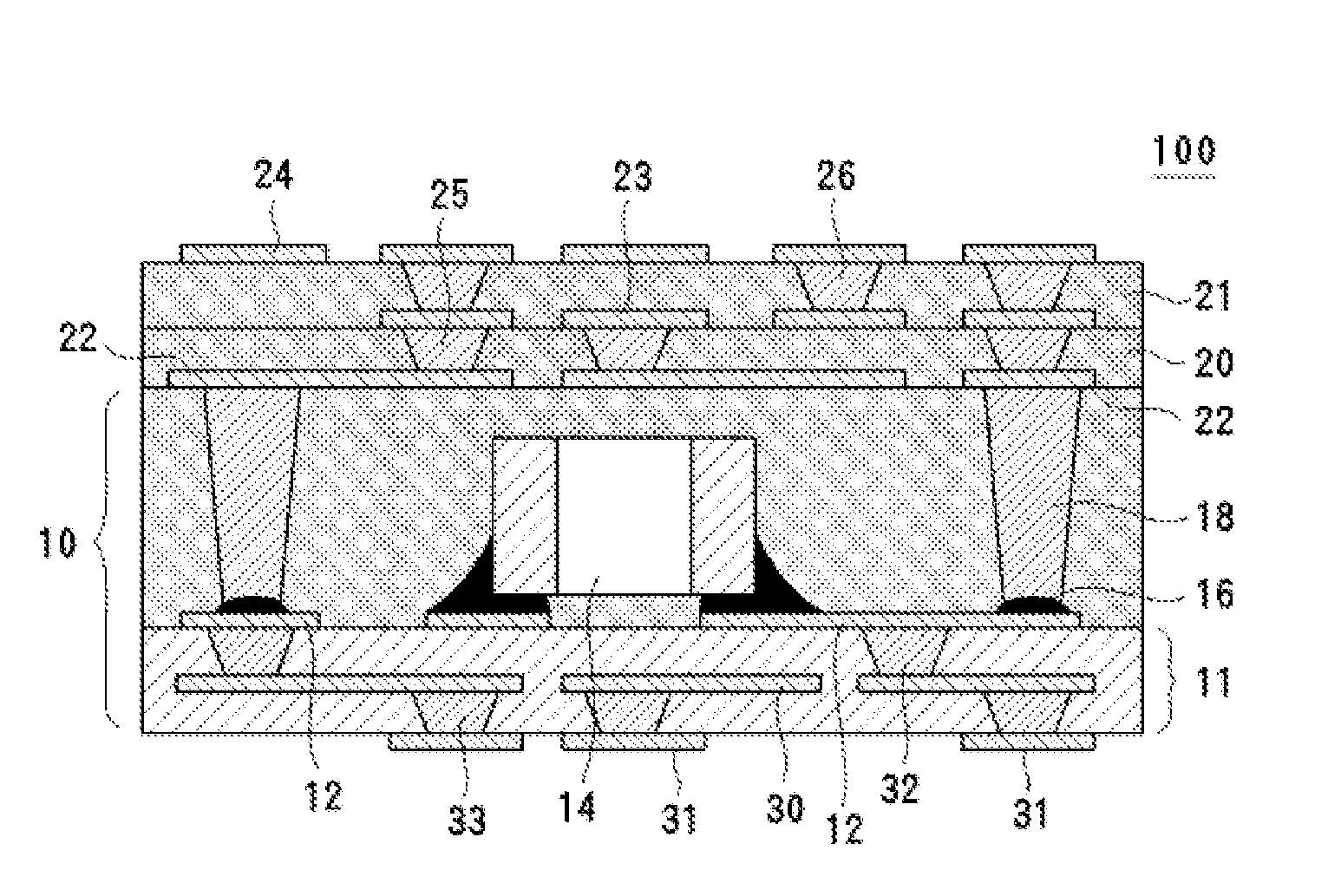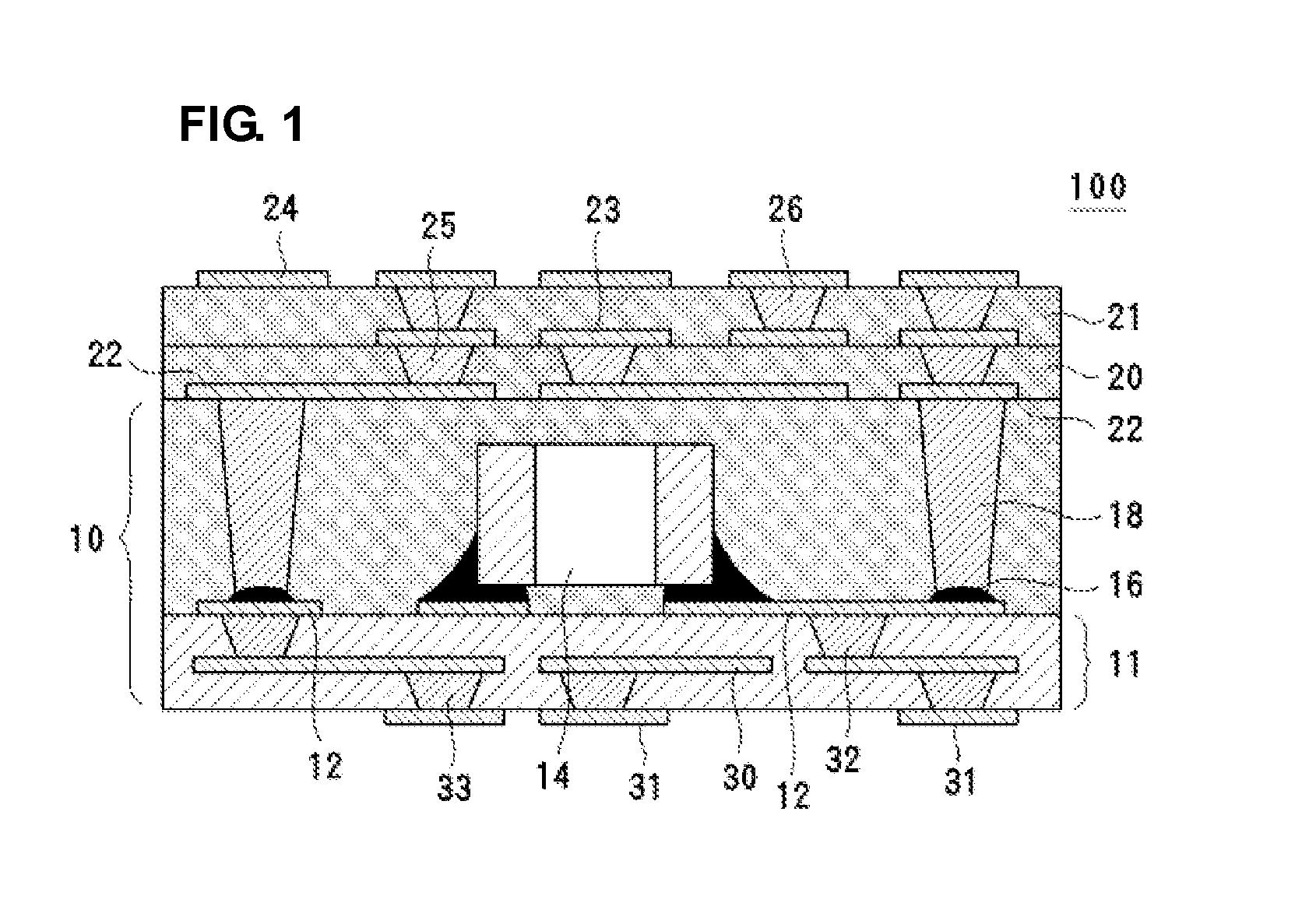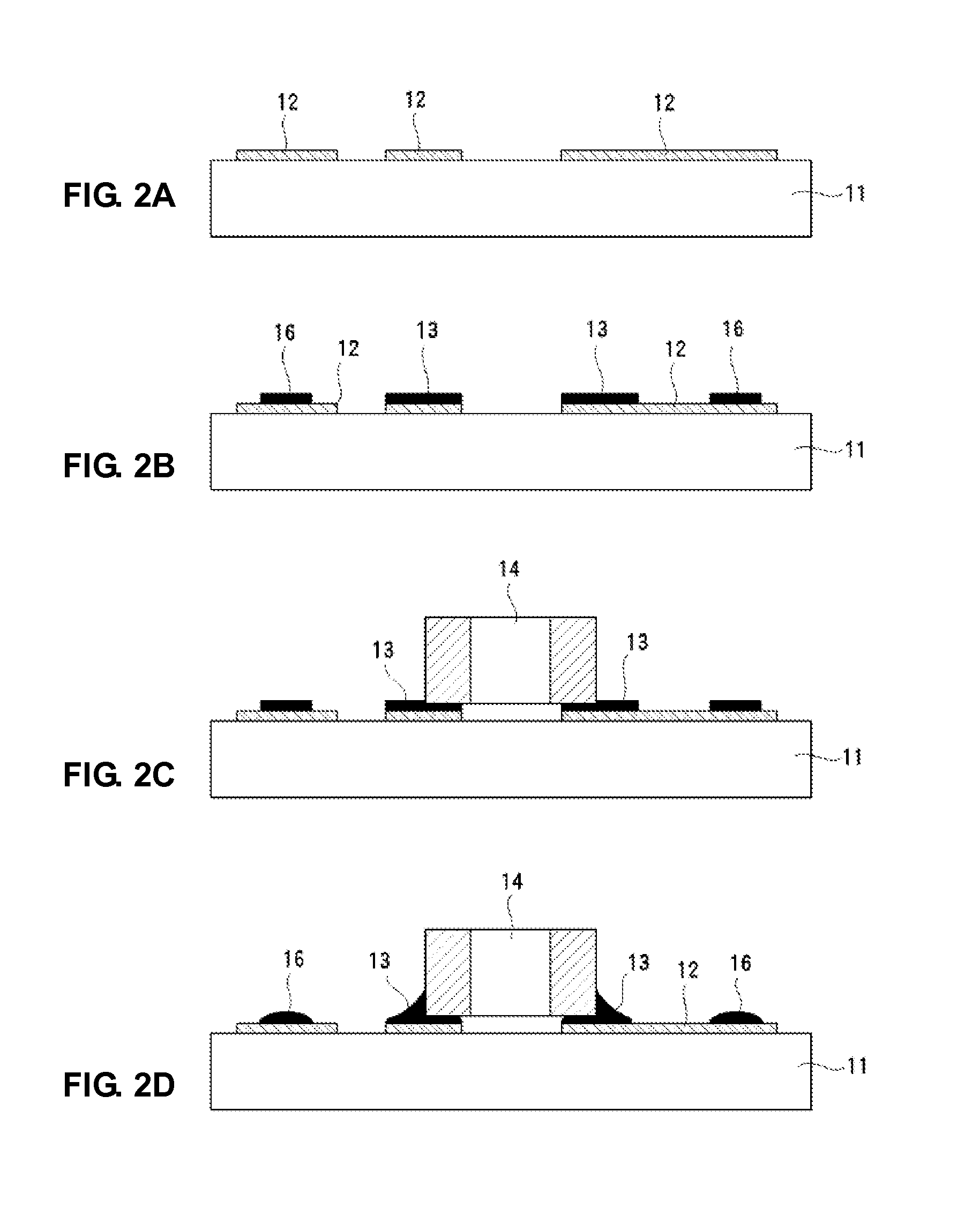Method of forming hole for interlayer connection conductor, method of producing resin substrate and component-incorporated substrate, and resin substrate and component-incorporated substrate
a technology of interlayer connection and hole, which is applied in the direction of sustainable manufacturing/processing, final product manufacturing, nuclear engineering, etc., can solve the problems of connection with interlayer connection conductor , quality problems, and inability to meet the requirements of interlayer connection, so as to improve quality and reduce cost , the effect of increasing the number of production steps
- Summary
- Abstract
- Description
- Claims
- Application Information
AI Technical Summary
Benefits of technology
Problems solved by technology
Method used
Image
Examples
first preferred embodiment
[0032]FIG. 1 is a longitudinal section of a component-incorporated module 100 formed by laminating a ceramic layer and a resin layer. In a component-incorporated substrate 10 which is a portion of the component-incorporated module 100, a mount component 14, such as a chip capacitor, for example, is mounted on a core substrate 11, and the top surface of the core substrate is provided with a resin layer 15 that covers the mount component 14. The top surface of the core substrate 11 includes an in-plane electrode 12, and the resin layer 15 includes an interlayer connection conductor (via conductor or through-hole conductor) 18. On the top surface of the component-incorporated substrate 10, other resin layers 20, 21 are laminated while in-plane electrodes 22, 23, 24 are interposed therebetween, and the in-plane electrode 12 is connected with the in-plane electrode 22 on the top surface of the resin layer 15 via the interlayer connection conductor 18. The in-plane electrodes 22, 23, 24 a...
second preferred embodiment
[0054]FIG. 4 shows another component-incorporated substrate 10A. This component-incorporated substrate 10A is produced using a transfer sheet instead of the core substrate 11, and transferring the in-plane electrode 12 to the resin layer 15 by peeling off the transfer sheet from the resin layer 15 after forming the resin layer 15 through the steps of FIGS. 2A to 2D and FIGS. 3A to 3C. As the transfer sheet, a metal sheet of stainless steel or other suitable material may be used, or a resin sheet, such as a carrier film, may be used. A metal foil may be pasted on the transfer sheet, and patterned to form an in-plane electrode. In this case, the component-incorporated substrate 10A is preferably made only of the resin layer 15, and the in-plane electrode 12 is exposed on the bottom surface of the resin layer 15.
third preferred embodiment
[0055]FIGS. 5A and 5B are views illustrating a method of roughening surface of the in-plane electrode 12. This roughening treatment is performed prior to the formation of the light reflective conductor 16 in the first preferred embodiment. As shown in FIG. 5A, the patterned in-plane electrode 12 is formed on the core substrate 11, and then an in-plane electrode 12a is roughened as shown in FIG. 5B. The roughening treatment is performed as either a dry method or a wet method, and the surface roughness Ra after the treatment is preferably about 1 μm, for example.
[0056]Steps following the roughening treatment are substantially the same as those of the first preferred embodiment. That is, after preparing the in-plane electrode 12a that is roughened as shown in FIG. 5B, the step of forming the light reflective conductor 16 and the mounting conductor 13, the step of mounting the mount component 14, the step of forming the resin layer 15, the step of forming the hole for the interlayer con...
PUM
 Login to View More
Login to View More Abstract
Description
Claims
Application Information
 Login to View More
Login to View More - R&D
- Intellectual Property
- Life Sciences
- Materials
- Tech Scout
- Unparalleled Data Quality
- Higher Quality Content
- 60% Fewer Hallucinations
Browse by: Latest US Patents, China's latest patents, Technical Efficacy Thesaurus, Application Domain, Technology Topic, Popular Technical Reports.
© 2025 PatSnap. All rights reserved.Legal|Privacy policy|Modern Slavery Act Transparency Statement|Sitemap|About US| Contact US: help@patsnap.com



